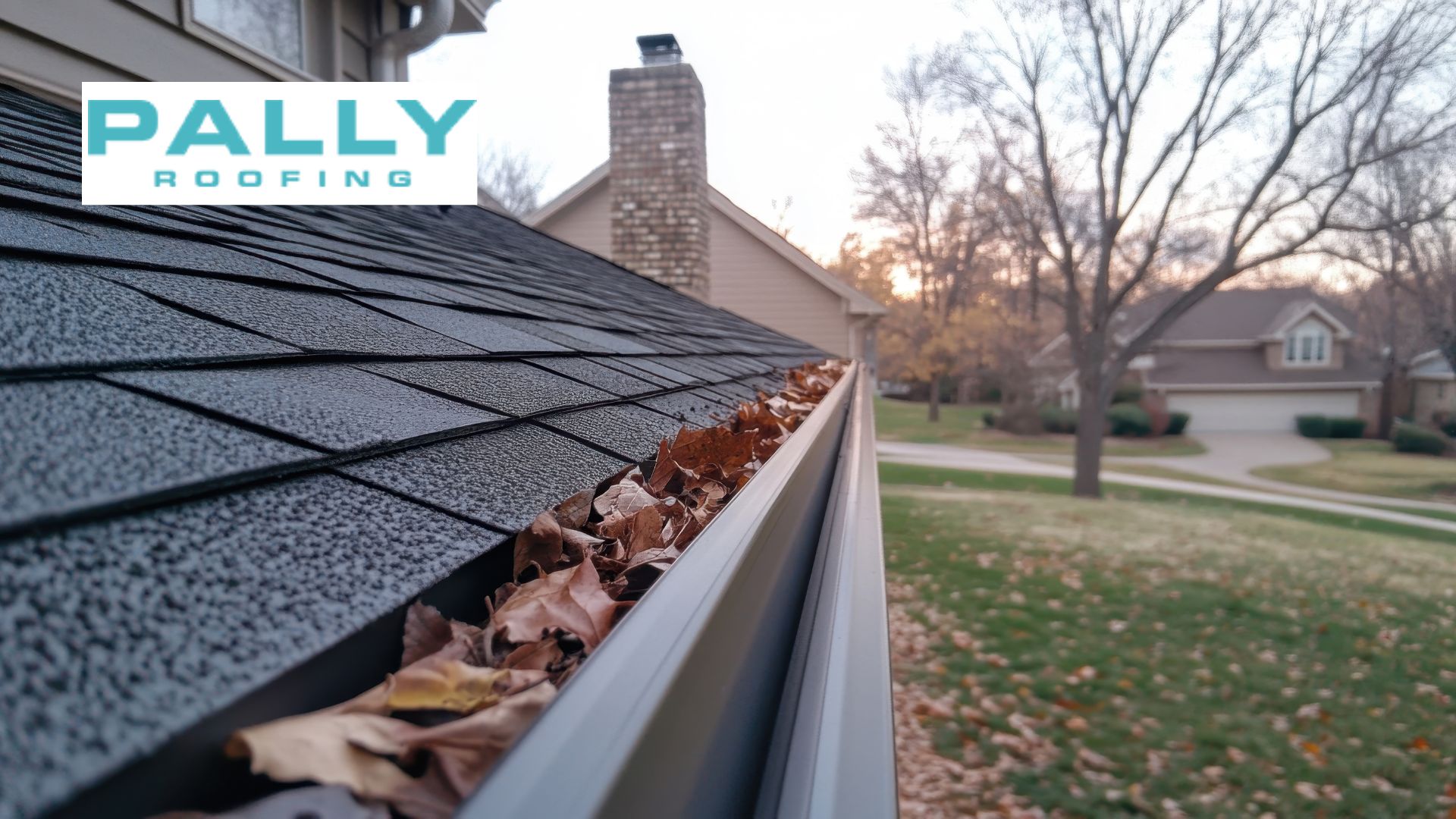Last updated on August 28th, 2024 at 09:22 am
Vent pipe on roof, vents, or vent stacks are crucial in building plumbing systems. These pipes extend from plumbing fixtures such as toilets, sinks, and drains up through the roof to vent out sewer gases and allow for proper drainage flow.
Table of Contents
At Pally Roofing, we understand the significance of vent pipe on roof in maintaining the integrity and functionality of your plumbing system. We also have the expertise to handle any potential vent pipe issues. As your trusted roofing solution, we prioritize excellence in all our services, including roofing installations, repairs, and maintenance.
Purpose and Functionality of Vent Pipe on Roof:
Vent pipes are an essential component of plumbing systems, serving multiple critical functions to ensure the proper operation of building drainage systems. At Pally Roofing, we recognize the importance of vent pipes in maintaining the integrity and functionality of your plumbing system.
The primary function of vent pipes on roofs is to ensure the safe and efficient removal of wastewater and sewage from the building. When water drains from plumbing fixtures, such as sinks, toilets, or showers, it creates negative pressure in the drainage pipes. Without proper venting, this negative pressure can impede water flow, leading to slow drainage, gurgling sounds, and even backups. With vent pipes, you can rest assured that your plumbing system is operating safely and efficiently.
Vent pipes alleviate this negative pressure by allowing air to enter the drainage system, equalizing the pressure and enabling water to flow freely. By providing a pathway for air to enter the plumbing system, vent pipes prevent suction forces from pulling water out of traps, which could result in foul odors and release harmful sewer gases into the building.
Types of Vent Pipes:
Vent pipes come in various materials and configurations, each with advantages and considerations.
PVC Vent Pipes:
PVC (polyvinyl chloride) vent pipes are one of the most common types found on roofs due to their affordability and durability.
These pipes are lightweight, easy to install, and resistant to corrosion and chemical damage.
PVC vent pipes are typically white and come in various sizes to accommodate different plumbing systems.
ABS Vent Pipes:
ABS (acrylonitrile butadiene styrene) vent pipes are another popular choice for plumbing venting applications.
Similar to PVC, ABS pipes are lightweight, easy to work with, and resistant to corrosion.
ABS vent pipes are typically black and are often used in residential and commercial plumbing systems.
Cast Iron Vent Pipes:
Cast iron vent pipes, although less common in modern construction, are known for their durability and longevity.
These pipes are highly resistant to damage from impact and fire, making them suitable for high-temperature environments. Cast iron vent pipes are heavier and more expensive than PVC or ABS pipes, but they offer superior strength and durability.
Differences Between Sewer Vent Pipes and Other Types:
Sewer vent pipes, also known as soil vent pipes, are specifically designed to vent sewer gases from the drainage system to the exterior of the building. These pipes are connected to the main sewer line and extend through the roof, allowing gases to dissipate into the atmosphere safely.
Other types of pipes found on roofs, such as plumbing stacks or ventilation pipes, may serve different purposes, such as venting plumbing fixtures or providing air circulation in the drainage system.
While sewer vent pipes are crucial for preventing the buildup of harmful gases indoors, other types of vent pipes contribute to maintaining proper drainage flow and preventing plumbing issues.
Placement and Installation of Vent Pipes:
Proper placement and installation of vent pipes on roofs are crucial for ensuring the effectiveness and longevity of your plumbing system. At Pally Roofing, we prioritize precision and attention to detail in all our installations to prevent leaks and optimize functionality.
Typical Locations for Vent Pipe Installation:
Vent pipes are commonly installed on the roof at strategic locations to allow for the safe venting of sewer gases and maintenance of proper drainage flow.
The most common placement for vent pipes is near plumbing fixtures, such as toilets, sinks, and drains, to provide direct venting for these fixtures.
Vent pipes are typically positioned vertically and extend through the roof to ensure proper ventilation and prevent the buildup of gases indoors.
Proper Installation Techniques:
Correct Pitch and Angle: Vent pipes should be positioned slightly during installation to facilitate condensation drainage and prevent water buildup. Additionally, the pipes should be pitched away from the building to prevent water from pooling around the vent stack.
Secure Attachment: Vent pipes should be securely attached to the roof using appropriate flashing and sealants to prevent leaks. Flashing should be installed around the base of the vent pipe and sealed tightly to the roof surface to ensure a watertight seal.
Adequate Support: Proper support is essential to prevent vent pipes from sagging or shifting over time. Support brackets or straps should be installed to secure the vent pipe to the roof structure.
Sealant Application: High-quality sealants should be applied around the base of the vent pipe and any seams or joints to create a watertight seal and prevent leaks.
Compliance with Building Codes: To ensure compliance and safety, it’s essential to adhere to local building codes and regulations governing the installation of vent pipes. Building codes may dictate specific requirements for vent pipe placement, size, and materials.
Considerations to Prevent Leaks and Ensure Optimal Functionality:
Regular Inspection and Maintenance: Routine inspections of vent pipes are essential to detect any signs of damage or deterioration and address them promptly. Additionally, periodic maintenance, such as clearing debris and checking for blockages, can help prevent issues and ensure optimal functionality.
Professional Installation: Hiring a reputable roofing contractor with experience in vent pipe installation, such as Pally Roofing, can ensure proper techniques and materials to prevent leaks and provide long-term performance.
Quality Materials: High-quality vent pipe materials and sealants are essential for preventing leaks and ensuring durability. At Pally Roofing, we only use top-tier materials and products to guarantee the quality and longevity of our installations.
Maintenance and Inspection of Vent Pipes:
Regular maintenance and inspection of roof vent pipes are essential for ensuring their longevity and functionality. Following proper maintenance practices and conducting routine inspections, you can identify potential issues early and address them before they escalate into costly repairs.
Guidance on Regular Maintenance Practices:
Clear Debris: Regularly inspect the area around vent pipes and remove any debris, such as leaves, branches, or other obstructions, that may accumulate on the roof. Debris can block the vent pipe or trap moisture, leading to deterioration and potential leaks.
Check Seals and Flashing: Inspect the seals and flashing around vent pipes for signs of wear, cracking, or damage. Replace any damaged sealant or flashing to maintain a watertight seal and prevent leaks.
Trim Nearby Trees: Overhanging branches or foliage can rub against vent pipes and cause damage over time. Trim back any vegetation near vent pipes to prevent abrasion and potential leaks.
Monitor for Corrosion: If your vent pipes are made of metal, regularly check for signs of corrosion or rust. Corrosion can weaken the pipes and lead to leaks or structural damage. Consider applying a protective coating to metal vent pipes to prevent corrosion.
Inspect for Blockages: Periodically check for blockages or obstructions in the vent pipes that may impede airflow. Use a flashlight or mirror to inspect the interior of the vent pipe for any debris or buildup.
Test Venting: Ensure that vent pipes effectively vent sewer gases by checking for foul odors inside the building. If you notice any unusual smells, it may indicate a problem with the venting system that requires attention.
Tips for Inspecting Vent Pipes:
Look for Leaks: Check for signs of water stains or discoloration around the base of vent pipes, which may indicate a leak. Additionally, inspect the underside of the roof for any signs of water damage or moisture buildup.
Check for Cracks or Damage: Inspect the exterior of vent pipes for any cracks, breaks, or other damage. Pay close attention to seams and joints where leaks are most likely.
Examine Supports and Attachments: Ensure that vent pipes are securely attached to the roof and adequately supported. Check for loose brackets or straps that may need tightening or replacement.
Perform a Visual Inspection: Take a close look at the overall condition of vent pipes, including the integrity of the pipe material and any visible signs of deterioration.
Conclusion
In conclusion, vent pipes play a vital role in the functionality and integrity of plumbing systems by facilitating proper drainage flow and preventing the buildup of harmful sewer gases indoors. Throughout this article, we’ve discussed the importance of vent pipes on roofs, the various types commonly used, proper placement and installation techniques, and the significance of regular maintenance and inspection.
Contact us today to learn more about our comprehensive roofing services and how we can assist you with vent pipe maintenance needs. Experience the difference with Pally Roofing and safeguard the integrity of your building structure for years to come.
FREQUENTLY ASKED QUESTIONS!
What is the pipe that comes out of roof?
The pipe comes out from the roof is called a vent pipe or plumbing vent.
What are the pipe vents on my roof?
Pipe vents on your roof are ventilation pipes allowing sewer gases to escape your plumbing system.
How to cut hole in roof for vent pipe?
To cut a hole in the roof for a vent pipe, measure the diameter of the pipe, mark the spot on the roof, and use a saw or drill with a hole saw attachment.
What are the PVC pipes on my roof?
The PVC pipes on your roof are likely vent pipes used in plumbing systems to vent sewer gases and maintain proper drainage flow.
Author
-

With more than 16 years of hands-on experience, Phillip Schmucker is the knowledgeable owner of Pally Roofing. His dedication to superior roofing services has earned him a reputable place in the industry. Phillip also shares his extensive expertise through writing, providing readers with practical tips and professional advice on various roofing topics. Follow him on LinkedIn.
View all posts






